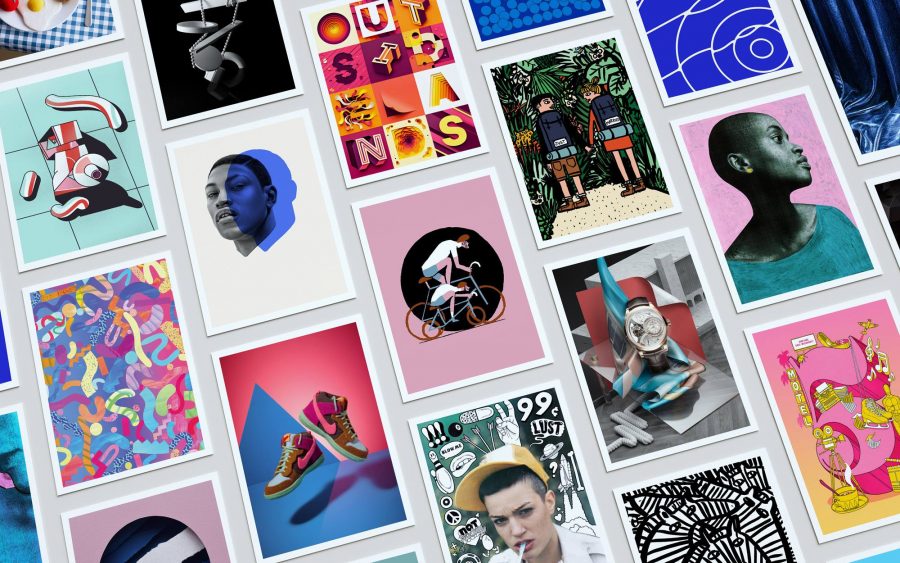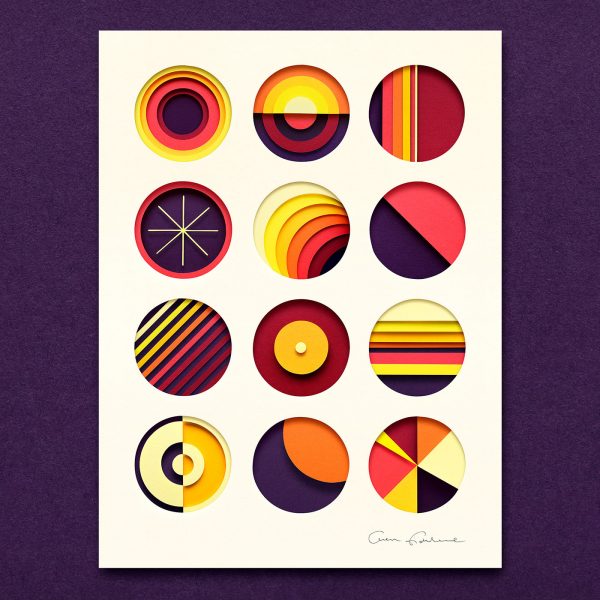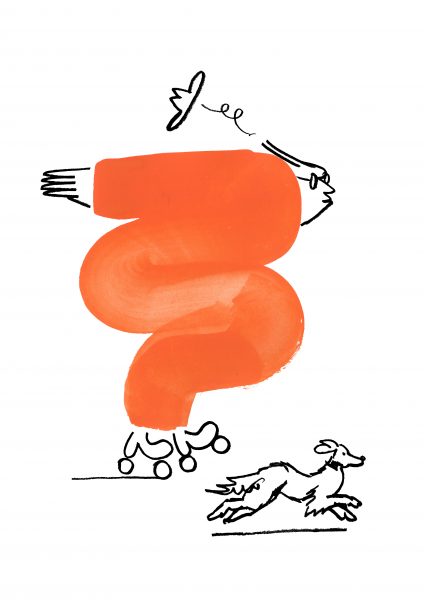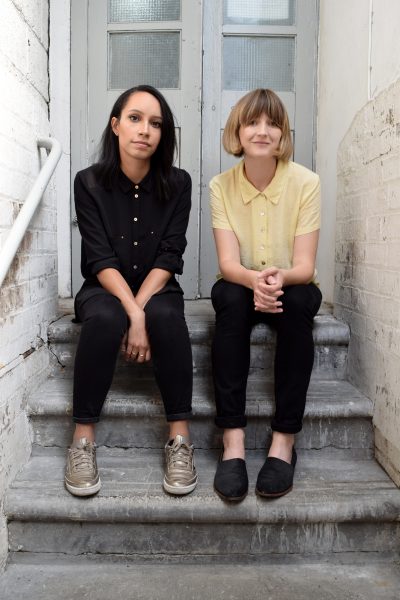Business Insights: Grand Matter talks about treating your freelance illustration practice as a business

It’s fair to say that most freelance illustrators wouldn’t consider themselves to be running a business.
“The word ‘business’ can strike terror into the heart of even the most savvy of creative minds.”
I’d go so far as to say there is a tendency to see illustration as something that’s done for the love of it, as opposed to being a well-paid career choice – a misconception that is perpetuated when the value of illustration is underestimated or misunderstood.
I was really excited to hear about the AOI’s current campaign. It feels like a positive step towards demystifying the business of illustration for all, whether you’re an illustrator or a client. A corralling spirit that calls on everyone to work together.
In 2017 I co-founded artist agency Grand Matter along with illustrator Ciara Phelan, and coming from the ‘client side’ in the past I find working closely alongside someone with experience of being in the shoes of the artists we represent hugely beneficial. Her perspective on the nuances and struggles of running a business as a freelance illustrator is invaluable, and working together we have a rounded viewpoint and are able to put that into the way we work.
As well as the marketing and client relationship building we do for our roster, we think it’s important to work closely with our artists to support their career development, whether that’s the direction they’d like to take their portfolio, the clients they want to be working with, or understanding the value of their work and intellectual property. The more knowledgeable and proactive our artists become in their business, the better the relationship is overall and the more we can do together to build on it.
There are some thought processes and development areas in particular we’ve found to be useful to look at, whether you are doing it alone or with an agent, to help understand what you want and how to go about growing your business.

Strawberry Hells illustrated by Alice Bowsher, represented by Grand Matter.
Set yourself some goals.
As with any business a little bit of strategy goes a long way, and as a freelance illustrator it’s a good idea to consider how you want to develop professionally and also what kind of life you want.
“Look to the future and set yourself some achievable goals to aim towards and refer back to in order to continue in the right direction.”
A good place to start is to better understand yourself, what your strengths are and what you want. Ask yourself:
– What do I truly love in life? This can be hobbies, interests, passions, social interactions, for example.
– What do I know about in life? This could be as simple as where you grew up, whether you’ve done a lot of travelling, any big life developments, any particular knowledge that sets you apart.
– What are my skills? These are things you have learned to do.
– What am I naturally good at? These are your talents.
– What client contacts and connections do I already have?
– What kind of life do I want?
Your strengths are most important for growth, and so you’ll want to play on these and identify gaps in your knowledge and experience that would help you make the most of them.
Your goals could be based on the kind of work you want to be doing, personal collaborations you’d like to initiate, clients you want to work with, or your work-life balance for example. You will also need to consider how much money you need to be able to live the life you want. It’s important your goals are realistic as it can take time to build up a business, although try to be aspirational and shake off any niggling doubts if you find yourself questioning your abilities or worth.
“Revisit your goals every 3-6 months and take stock of how far you’ve come, and see whether there’s anything you’d change going forward.”
As a freelancer you are an entrepreneur of sorts, and in a great position to build a business that can react to changes in the industry and life.

RoomFifty print by Owen Gildersleeve, represented by Grand Matter.
Understand your clients
One of the perks of being an illustrator is the scope to work across all sorts of projects, from advertising and branding to PR, fashion, book publishing or editorial outputs, as just a few examples. Each of these sectors operate slightly differently, and within them businesses can vary hugely in terms of size and processes.
“Understanding how to approach them and anticipate clients’ needs is well worth taking some time to think about, and will also help when negotiating fees and contracts.”
Things to consider:
– How big is the company or team? Are they likely to be quite bureaucratic?
– Are they working on behalf of a client? Is there a chain of command when signing off creative briefs, budgets or artwork?
– Might they be looking at a number of options for their brief, or are you the only one?
– Are there any constraints such as time or logistics?
– Who are their audience and what do they want?
Being aware of these things allows you to identify potential challenges the client may be facing so you can be constructive and offer the tools to a solution, which in turn helps the project scoping and negotiation process, increasing the chance of working together and starting things off in the right way. I’m a big believer in the power of a well-worded email or a constructive phone call.
Price your work with confidence
Quoting can be fraught with worry and anxiety for a number of reasons, although as a business pricing your work right is fundamental to making a sustainable living.
“The very nature of being a freelancer means you may not be working consistently throughout the year and so undervaluing your work could be damaging to your cash flow and wellbeing.”
Rates are in part down to your experience, but mostly the industry you’re working in and the value that your work will give the client. Editorial work, for example, is generally lower paid given the nature of the industry, and advertising or PR much higher based on the client size and how many people the campaign will reach. It is not an exact science and is something that does get easier with experience, although there are some core things to consider to help you think it through and justify the value of your work:
– How long will it take and how many rounds of feedback will it go through?
– Will you incur any expenses by taking on the project?
– What is the industry? e.g. the financial sector, a commercial brand, a charity, book publishing, PR.
– How big is the client?
– What type/s of media will the work will be used on and how visible it will be? e.g. billboards, social media, digital ads, press, a PR event, in store, on packaging etc.
– Where in the world it will be used? e.g. UK only, Europe or Worldwide.
– How long will the work will be in use for? This could be a week, a year, 5 years, forever, or anything in between.
– Does the client need exclusivity or ownership of the work?

Rollerblader illustration by Alec Doherty, represented by Grand Matter
Every piece of work you create belongs to you and should be thought of as your intellectual property that you are allowing a client to use in an agreed way.
“Keeping good records of the details of your commissions is really important, including any agreed terms with regards to the process and the usage license.”
Some clients will want to own your work so that they are able to use it in any way they want now and in the future, which gives them a lot more value out of it. There are drawbacks to relinquishing the ownership of your work that need to be factored in to the cost, such as not being able to make further money from it down the line, but also not having the control over how it is presented or any moral rights to the work – they could modify or copy it, sell it to other companies and they would not need to credit you for pay you any more money for that.
Top five tips for freelance life
Illustration can be a hugely fulfilling career doing the thing you love. If you’re able to think of it in business terms and work towards financial stability that should help other aspects of your life also. There’s a lot more I could say, and so I’ll end with a few final thoughts that I hope will be useful when thinking about your working life and next steps.
– Pursuing personal projects and collaborations are good for scratching a creative itch, and they can also help build your audience, portfolio and experience in accordance with your goals.
– The way you present yourself and your portfolio should reflect the work you would like to be doing. It’s a portfolio equivalent to the old (and perhaps antiquated) ‘dress for the job you want not the job you have’ mantra.
– Time to yourself without any distractions from the modern world can allow your brain to wander and encourage a little harmless boredom, which can spark off ideas.
– If you find yourself disagreeing with client feedback on a project it is useful to say so. The process is often quite collaborative. The important thing is being able to justify your reasons constructively and knowing when to compromise.
– Keep good financial records and consider hiring an accountant if you can. I suggest creating a spreadsheet of all commissions that you can use to easily work out yearly earnings and responsibilities such as income tax and NI. Keep your invoices and receipts on file.

Ciara and Dorcas from Grand Matter
Back to News Page
